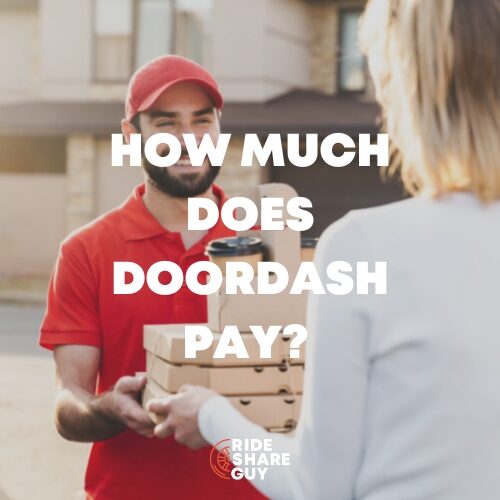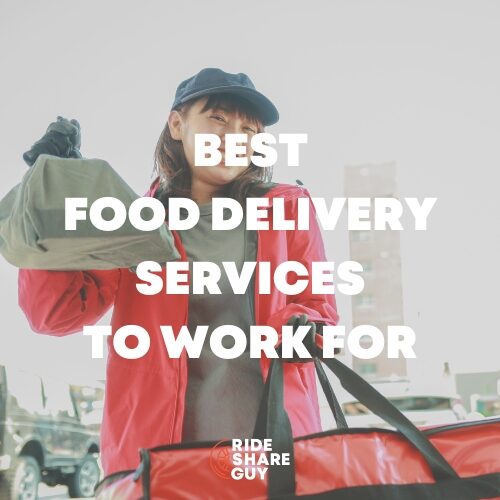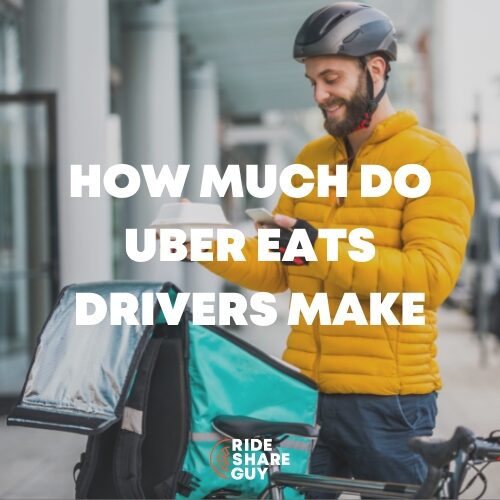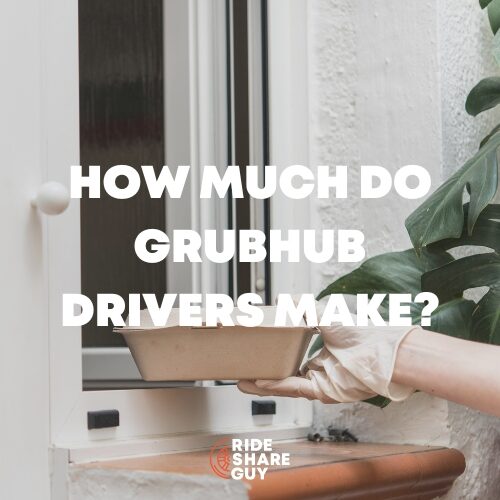Think delivery drivers should be employees, not independent contractors? Midwest-based EatStreet thinks so too, and they have a unique and compelling platform for drivers. But does it pay enough? Senior RSG contributor Paula Gibbins interviews an EatStreet driver in Madison, WI about Eatstreet delivery, how much he makes with EatStreet, what it’s like being an EatStreet employee and more.
With so many food delivery apps out there, it’s not surprising there’s one flying under the radar, expanding to different markets with an employee-based model of business. It’s called EatStreet, and it was founded in 2010. It’s based out of Madison, Wisconsin.
Quick summary:
- EatStreet is a restaurant delivery platform available in 38 states
- EatStreet is currently hiring in the Midwest for now (Iowa, Wisconsin, Illinois, Kansas)
- Drivers aren’t independent contractors – they’re actually employees!
- If EatStreet isn’t available in your market, sign up for one of our top recommended delivery services, like DoorDash or Instacart
Like many other startups, it began with college students and was originally called BadgerBites. A little over a year later, it started expanding to other markets, and now it has a hold in 38 states plus Washington, D.C., servicing 15,000 restaurants.
I chatted with Paul, a driver for EatStreet in their origin market of Madison. He’s been driving for them for a little over one year and was happy to share his experience.
How EatStreet Delivery is Different from DoorDash, Postmates, and Other Delivery Companies
The biggest difference? EatStreet employs their drivers. You’re an hourly worker making a base rate, plus tips, plus any bonus that may be available in your area.
Paul shared he has averaged $25.17/hour gross over the past 26 pay periods (or one year).
Paul did admit that his base pay is low—$6.75 an hour, which is under minimum wage—but with the bonuses and tips, they more than make up for it.
On average, he worked 32.58 hours per week and made a grand total of 3,716 deliveries during that time period. He even broke down for me how much he’d earned in tips: $5.69 average per order.
Granted, Paul did mention that not all customers tip—much like other platforms—but with driving for EatStreet, getting paid an hourly rate, you don’t really miss it as much as you would otherwise. If it takes a restaurant 40 minutes to get you the order, you’re getting paid no matter what, so the wait doesn’t seem as unbearable.
However, Paul was sure to mention that if you’re waiting for an order and the restaurant is taking forever (or any other delays happen), it’s best to talk to your live dispatcher, explain the situation and they will determine if you should wait it out or move on to the next order they have sent your way. You can’t decline an order on EatStreet, but with getting paid hourly, there’s really no need to.
One delay that happened to Paul on occasion was accidentally going to the wrong restaurant. If something like that were to happen, he’d just call his dispatcher, explain the delay and move on to the correct one instead.
An area where EatStreet is similar to other delivery app models is that you are using your own vehicle. Unfortunately, since you’d be a W-2 employee, that means you cannot write off your mileage at tax time.
EatStreet does break down its markets into zones, however. You’re never driving too far to pick up or deliver an order.
EatStreet Driver Requirements
Much like driving for DoorDash, EatStreet driver requirements are pretty standard for the delivery industry. You will need the following to deliver for EatStreet:
- Reliable vehicle and smartphone
- Clean driving record
- Valid license and insurance
- Ability to work nights and weekends is preferred
- Ability to work well independently, have a great attitude and be willing to learn
- Must be at least 18 years of age with a minimum of two years U.S. driving experience
- Ability to lift up to 10 pounds regularly 30 pounds on occasion and be able to frequently sit, stand, walk, and drive with or without reasonable accommodation
EatStreet Delivery: How Does EatStreet Work for Drivers?
On the driver side of things, you do everything on the app. Much like other services, you apply to drive for EatStreet on the app. They do a background check, and if everything looks good, you’ll be on the road fairly quickly.
Paul said the process took him about a week. He applied around when Covid-19 first started shutting things down in March 2020. He’d been driving for Uber and Lyft for the previous four years, but people weren’t wearing masks—there was no policy enforcing it yet—and he didn’t want to catch coronavirus. He decided to look into delivery options in his area.
“I did Uber Eats for about three weeks,” said Paul. “I quickly realized this isn’t going to pay anything. The tips were awful with Uber Eats here.”
Paul heard about EatStreet from a friend, got a referral and got started. He’s also passed on referrals to other drivers for an extra bonus.
The onboarding process was all through the app, though he did have an in-person “interview” with his supervisor. But, since it was the start of the pandemic, it was outside of the actual building and didn’t include the tour they used to give drivers.
Paul also mentioned that in Madison, there used to be a break room available for drivers with arcade games and a cafe, but that has been closed up due to the pandemic.
When he met with his supervisor, Paul received an allowance for buying more masks and was given his EatStreet credit card for completing orders and a warmer bag for keeping the food hot.
As far as training goes, he had several hours of videos to watch with quizzes after the videos to make sure he was paying attention and learned what he needed to know. He also had to pass a background check before being allowed to drive on the platform.
EatStreet Bonuses
EatStreet does give out bonuses on a regular basis. Paul explained in his market, he gets bonuses based on how many hours he works. On the other side of Madison, they get bonuses based on how many deliveries they make.
Paul said that if you work 20 hours in a pay period (which is two weeks), you get an extra $2 per hour. 30 hours would earn you $3 more per hour. And up to $5 extra per hour if you work 50 hours or more every two weeks.
In addition, if you work over 40 hours per week, you get paid time and a half for any overtime you put in.
“So, if you ended up working an 80 hour pay period, you’d end up with a $400 bonus,” explained Paul. That would be the $5 per hour extra multiplied by the 80 hours you worked. So, you’d get the base rate, plus tips, plus that $400 bonus.
To break it down even further, if you look at Paul’s numbers, he made approximately 3,700 deliveries in one year. Divide that by 26 pay periods and you’ve got 142 deliveries. If he was averaging $5.69 in tips per delivery, that would be $807.98 per pay period in tips alone. So, tips plus bonus (we’ll change this bonus to his average of 32 hours per week):
$807.98 (tips) + $320 (bonus) = $1,127.98
And that is before the base pay is factored in. His base pay at 32 hours per week, or 64 hours per pay period, would come in at about $432 before taxes. That takes him to a grand total of about $1,559 every two weeks.
Keep in mind, these numbers would be before taxes are taken out and, as I mentioned above, you’re not able to take mileage deductions since you’re an employee. For Paul, he averages about 80 miles per shift.
Scheduling with EatStreet
Every Monday, you post your availability for the following week. Your supervisor then assigns you shifts during your available hours. You’re not guaranteed to get all of the hours you’re available for.
“You put in your desired number of hours, and you put I’m available between 11 a.m. until 8 p.m.,” explained Paul. “I would put that down. If that’s when they need drivers, they may give you an hour break because it’s not as busy in the afternoon. So, they may say 11-3 and then from 4-8.”
If you’re not available, simply put that in. Paul tends to explain why he is going to be offline, especially for longer periods of time. Throughout the year, he takes time off to visit his parents down in Texas and takes off for about 2 weeks at a time. He just lets his supervisor know he’ll be gone for that extended period and that he’s going to be unavailable at that time.
When Paul is back in town, then he adds his available hours back into the schedule. Paul said, “If you don’t show up on the schedule for several weeks in a row [without an explanation], they think you’ve stopped. So, you kind of have to let them know what’s up.”
Paul also explained you can easily vary your hours. If he’s only available to work 5 hours one week, but 40 hours the next, he can submit that and be scheduled for only those fewer hours if needed.
If you had plans that fall through, you can always go on the app and see if there are extra shifts to pick up. Also, if an emergency comes up, or you realize a few days in advance that you actually can’t work a shift you’ve been assigned, there’s a spot on the app to release your hours.
“There’s actually a call-out button on the app,” said Paul. “You can actually say I can’t make that shift. You’re supposed to send your supervisor a text and let them know ‘Hey, I can’t make this shift.’ Then you call out the shift in the app. There’s actually a Facebook page for drivers. That is a venue where drivers will say something came up. If I call out and no one picks up my shift, then that is a penalty on me as a driver.”
“I have heard of people getting reduced hours as a consequence for doing that a lot,” said Paul. “I’ve only called out once in a year and I did it in advance so there was no penalty.”
If you’re late for a shift, you get about 15 minutes leeway before you’re considered late. Paul mentioned there’s a performance section on the app that rates your reliability. “It’s basically data to let you see how you stand,” said Paul.
Working a Shift on EatStreet
When it’s time to start your shift, you go online and start seeing the deliveries the dispatcher queues up for you.
Within the app, you’ll see the address of your customer as well as a contact number for them. The contact phone numbers are scrambled through a third party company, so your customer doesn’t know your real phone number and you don’t know their real number.
The app also shows you how long until the order is supposed to be ready, any pickup instructions and the restaurant information you need to know.
There will be times when you’ll have multiple orders to pick up from the same restaurant. Paul ended up purchasing a bigger warmer bag to accommodate multiple orders or large orders. He also learned very quickly to have drinks secured, or else expect a mess in the vehicle the first time you have to hit your brakes.
Should You Try Out EatStreet Delivery?
Pros & Cons of EatStreet
Pros
- You’re an actual employee
- You still have flexibility in scheduling! Just let EatStreet know when you’re available
- Live dispatcher available for all drivers – no faraway, automated customer service responses
- Deliveries are within zones – you never have to travel too far for a delivery
- Pre-pandemic, drivers had access to a break room (bathrooms!) and a cafe
- EatStreet drivers are provided with a credit to purchase masks and are given a starter warmer bag
- Drivers regularly receive bonuses
Cons
- As an employee, you can’t take any mileage deductions
- Base pay is below minimum wage – supposed to make it up in tips and bonuses, but that doesn’t always happen with tips
- Not well known, so customer demand is lower than what it would be for DoorDash, Postmates, etc.
- You can get penalized if you call out of work and don’t find someone to cover your shift
Overall, Paul enjoys EatStreet and would highly recommend working for them. He likes that he can have a bit of flexibility while also having those guaranteed earnings for the hours he works.
Like with any company, there are upsides and downsides, good days and bad.
Having direct contact with a dispatcher to discuss any questionable orders or delays makes working with EatStreet an easy choice. Paul also said his supervisor is easy to contact and responds within an hour typically, even on the weekends.
He has the freedom to take 2 weeks off at a time to visit his family in Texas without worrying about whether or not his job will be there when he gets back. And Paul is able to work anywhere from a few hours to several hours a week, depending on his availability that he provides on a weekly basis. He doesn’t have to stick to working 9-5 every day, every week. He can choose when he wants to work.
EatStreet not available in your area yet? Check out our other recommended delivery services, including DoorDash and Instacart.
Drivers, what do you think of a delivery company like EatStreet? Is it better, worse, or the same as working for DoorDash or Postmates?
-Paula @ RSG




